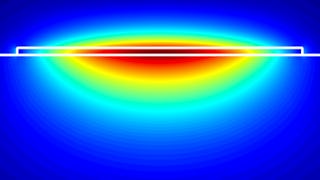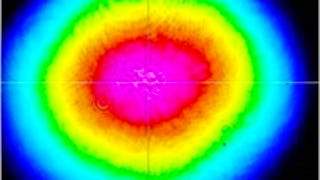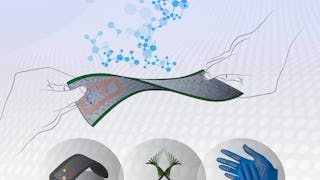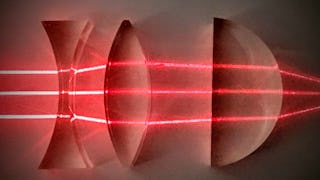This course can also be taken for academic credit as ECEA 5606, part of CU Boulder’s Master of Science in Electrical Engineering degree.

Gain next-level skills with Coursera Plus for $199 (regularly $399). Save now.

Nanophotonics and Detectors
This course is part of Active Optical Devices Specialization

Instructor: Juliet Gopinath
6,363 already enrolled
Included with
(23 reviews)
What you'll learn
Use nanophotonic effects (low dimensional structures) to engineer lasers
Apply low dimensional structures to photonic device design
Select and design optical detector for given system and application
Skills you'll gain
Details to know

Add to your LinkedIn profile
12 assignments
See how employees at top companies are mastering in-demand skills

Build your subject-matter expertise
- Learn new concepts from industry experts
- Gain a foundational understanding of a subject or tool
- Develop job-relevant skills with hands-on projects
- Earn a shareable career certificate

There are 6 modules in this course
The course covers the basics of nanophotonic light emitting devices and optical detectors, including metal semiconductor, metal semiconductor insulator, and pn junctions, photoconductors, avalanche photodiodes and photomultiplier tubes. Low dimensional structures enable an entirely new class of devices. Join me on a journey to understand how this happens and explore powerful examples of successful technologies such as the quantum cascade laser.Module 1 will cover the quantum cascade laser, a laser design based on intersub-band transitions, that enables very long wavelength lasers. It will also talk about lasers that operate on intraband transitions, using low dimensional structures, which enable further control over carrier concentrations.
What's included
6 videos4 readings2 assignments1 discussion prompt
In this unit, we will learn how to confine photons just as we do with electrons. This gives us power over the allowed modes of emission, allowing us to enhance the performance of lasers as well as develop 'threshold-less' lasers. I hope you enjoy this exciting topic as much as I do.
What's included
8 videos2 readings2 assignments
In this module, you will learn about the basics of detection and the key performance metrics that are used to evaluate detectors including noise equivalent power and detectivity. This lays the building blocks for fundamental understanding, design, and use of different photonic detection technology. This is core information that should be in the wheelhouse of any photonics researcher or engineer.
What's included
5 videos2 readings2 assignments
In this unit, you will learn about the fundamentals of how metal insulator semiconductor devices operate, their advantages and challenges they face. This information is particularly useful for understanding the operation of charge-coupled devices, discussed in the next section.
What's included
10 videos2 readings2 assignments
In this module, you will learn about two powerful detection technologies: charge coupled devices (CCDs) based on metal insulator semiconductor structures and photoconductors. These technologies are very useful for photonic systems.
What's included
5 videos2 readings2 assignments
In this module, you will learn about another very important detector technology: p-n junctions. These junctions can be used to be photodiodes as well as avalanche photodiodes. We will learn these important technologies function, with applications ranging from microscopy to light detection and ranging (LIDAR).
What's included
12 videos2 readings2 assignments
Earn a career certificate
Add this credential to your LinkedIn profile, resume, or CV. Share it on social media and in your performance review.
Build toward a degree
This course is part of the following degree program(s) offered by University of Colorado Boulder. If you are admitted and enroll, your completed coursework may count toward your degree learning and your progress can transfer with you.¹
Instructor

Offered by
Explore more from Electrical Engineering
 Status: Free Trial
Status: Free TrialUniversity of Colorado Boulder
 Status: Free Trial
Status: Free TrialUniversity of Colorado Boulder
 Status: Preview
Status: PreviewTechnion - Israel Institute of Technology
 Status: Free Trial
Status: Free TrialUniversity of Colorado Boulder
Why people choose Coursera for their career




Learner reviews
23 reviews
- 5 stars
43.47%
- 4 stars
34.78%
- 3 stars
8.69%
- 2 stars
8.69%
- 1 star
4.34%
Showing 3 of 23
Reviewed on May 6, 2020
Content is really good. Quality of assignments are also very nice. Only one problem is framing of questions is not done properly.

Open new doors with Coursera Plus
Unlimited access to 10,000+ world-class courses, hands-on projects, and job-ready certificate programs - all included in your subscription
Advance your career with an online degree
Earn a degree from world-class universities - 100% online
Join over 3,400 global companies that choose Coursera for Business
Upskill your employees to excel in the digital economy
Frequently asked questions
To access the course materials, assignments and to earn a Certificate, you will need to purchase the Certificate experience when you enroll in a course. You can try a Free Trial instead, or apply for Financial Aid. The course may offer 'Full Course, No Certificate' instead. This option lets you see all course materials, submit required assessments, and get a final grade. This also means that you will not be able to purchase a Certificate experience.
When you enroll in the course, you get access to all of the courses in the Specialization, and you earn a certificate when you complete the work. Your electronic Certificate will be added to your Accomplishments page - from there, you can print your Certificate or add it to your LinkedIn profile.
Yes. In select learning programs, you can apply for financial aid or a scholarship if you can’t afford the enrollment fee. If fin aid or scholarship is available for your learning program selection, you’ll find a link to apply on the description page.
More questions
Financial aid available,

